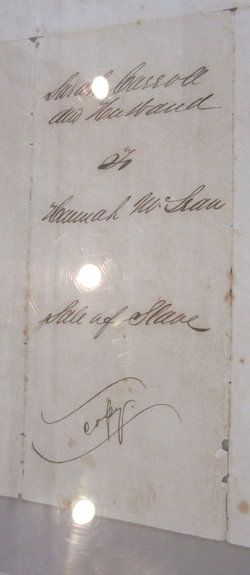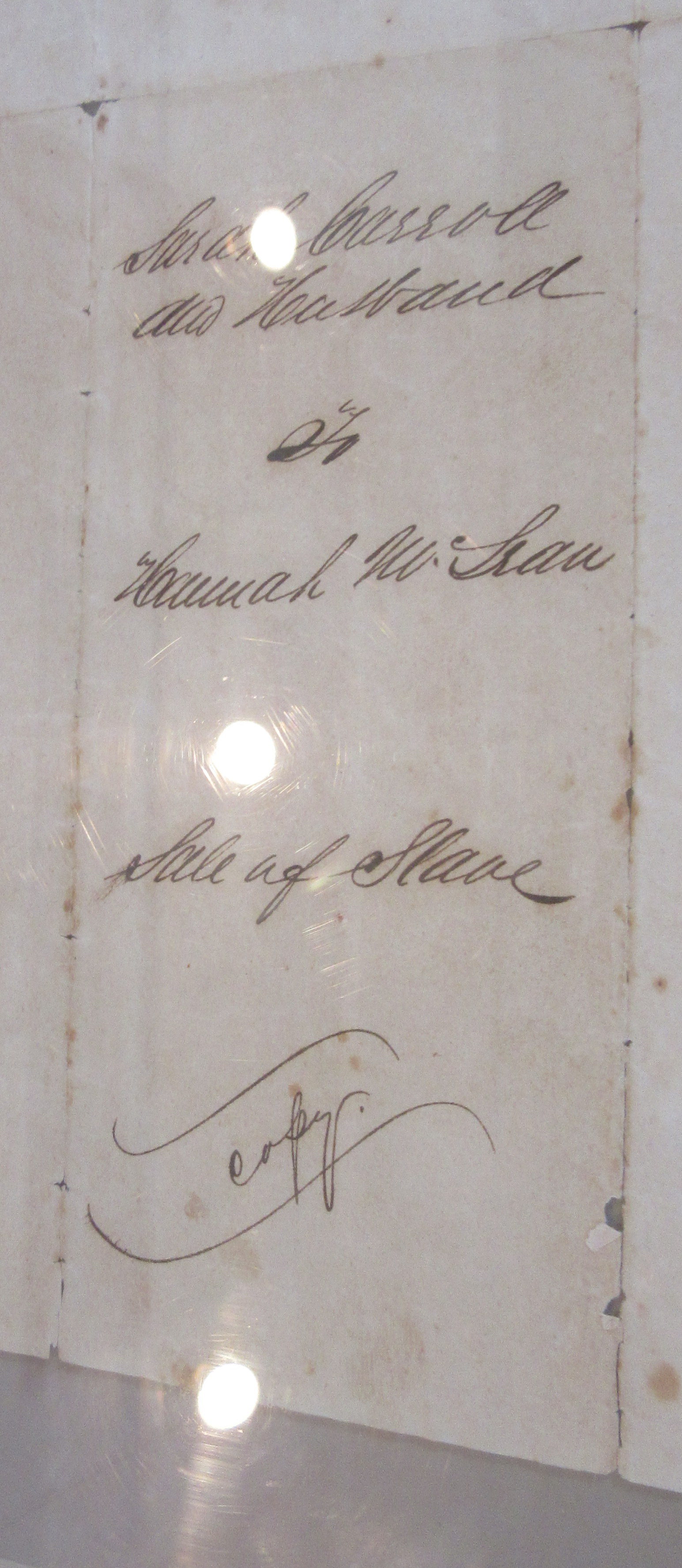Maria was young and Hannah McLean paid $800 for her. The bill of sale is on file at The Houston County Museum in Crockett.
The enslavement of African Americans was the curse of early American life, and Texas was no exception. By 1860, the census found 182,566 slaves, over 30% of the total population of the State. Most slaves came to Texas with their owners, and the vast majority lived on large cotton plantations in East Texas. By the time of the Civil War, slaveholders controlled most of the wealth in Texas and dominated politics at all levels.
In spite of their oppression, the slaves did not behave like a defeated people. Instead, they tried to make the best of their lives and to carve out what independence they could. Most Slaves were allowed to be on their own in the evenings and during time off on Saturday afternoons and Sundays. They took full advantage of their time, to enjoy their families and try to keep them together; to build a remarkable religious community; and to create a rich and influential cultural heritage, especially in the area of music.
When the Civil War came, Texas was not invaded, and the slaves continuted to live and work as they had before. They realized that a Union victory would mean their liberation, and they listened for news as best they could and passed the word of any developments. It was not until June 19, 1865, that Union forces occuppied Texas and officially freed the slaves.
Maria was young and Hannah McLean paid $800 for her. The bill of sale is on file at The Houston County Museum in Crockett.
The enslavement of African Americans was the curse of early American life, and Texas was no exception. By 1860, the census found 182,566 slaves, over 30% of the total population of the State. Most slaves came to Texas with their owners, and the vast majority lived on large cotton plantations in East Texas. By the time of the Civil War, slaveholders controlled most of the wealth in Texas and dominated politics at all levels.
In spite of their oppression, the slaves did not behave like a defeated people. Instead, they tried to make the best of their lives and to carve out what independence they could. Most Slaves were allowed to be on their own in the evenings and during time off on Saturday afternoons and Sundays. They took full advantage of their time, to enjoy their families and try to keep them together; to build a remarkable religious community; and to create a rich and influential cultural heritage, especially in the area of music.
When the Civil War came, Texas was not invaded, and the slaves continuted to live and work as they had before. They realized that a Union victory would mean their liberation, and they listened for news as best they could and passed the word of any developments. It was not until June 19, 1865, that Union forces occuppied Texas and officially freed the slaves.
Inscription
Maria's grave is not marked.
Advertisement
Advertisement



